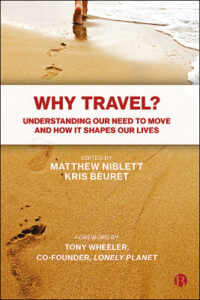ITC report reveals “seismic shifts” in individual travel behaviour in England
Car use down, rail use up; but significant differences between age groups and between town and country
January 2017
A recent Independent Transport Commission (ITC) report has revealed strikingly changing patterns in individual travel behaviour that could have huge implications for the future of Britain’s road and rail networks. The report, carried out for the ITC by experts using data from the National Transport Survey, analysed road and rail travel trends between 1995 and 2014. It found that people in England are making fewer but longer journeys, and the number of miles travelled per person seems to have remained stable since peaking 10 years ago. Also, people’s transport choices are changing: we are travelling less by car and more by rail than we were 20 years ago.[1] The increase in rail passengers comes despite the fact that rail fares have increased considerably in real terms while motoring costs (including car purchase costs) have not.[2]
Within these overall findings, striking differences were found between different age groups and between those living in urban and rural areas. Going against the general trend of decreasing car travel, women over 60 are using cars more. In contrast, young males, who historically have shown strong preference for car use, have been switching away from the car more than any other demographic group. The report links this in part to changes in attitudes amongst young people who increasingly view cars as “appliances not aspirations”. [3] Rural areas still show high per capita car use, but urban areas are using the car less and less, particularly in London where usage has fallen by up to a half.
Another crucial finding of the report is the weakening of links between incomes and travel.[4] Historically, higher incomes have been correlated with increased travel and this relationship has formed a key assumption within transport planning and policy. Yet over the period studied, the gap in travel between the richest and poorest quintiles has narrowed, while car and rail travel have not followed changes in GDP and disposable incomes. Dr. Matthew Niblett, Director of the ITC, commented: “As the Government and regional transport bodies embark upon delivering a period of large-scale infrastructure investment, our findings raise important planning issues as it is clear that attitudinal factors are becoming an increasingly significant driver of travel.”
The ITC is playing an active research role to develop a stronger understanding of how such attitudinal factors drive travel through its projects On the Move, which focuses on statistical trends in rail and road travel in the UK, and Why Travel?. The Why Travel? project is exploring travel motivations in the broadest of contexts, viewing travel as a human behaviour central to our biological, psychological and social well-being as well as crucial to the effective functioning of our societies and economies worldwide. Ranging across centuries and cultures, the project draws on expert perspectives from the arts, sciences and humanities in order to better understand why we travel and how we might make better decisions about travel in the future. For more information on the project, including up-to-date news stories and expert views, see www.whytravel.org
Also see:
“Children travelling less independently and walking less” (Why Travel? blog post)
“Falling out of love with the car” (Why Travel? blog post)
Notes:
[1] It should be noted however that, according to the ITC report: “Most of the distance travelled by British residents is by car as a driver of passenger (78% in 2014) which remains the dominant mode of travel, with rail travel comprising 9% of mileage.”
[2] According to the report, rail fares have increased by 25% above inflation since 1995 whereas motoring costs have remained stagnant.
[3] For more on the attitudinal changes behind these trends, see On the Move: Exploring attitudes to road and rail travel in Britain by Social Research Associates (ITC and Office of Rail and Road, July 2015): http://www.theitc.org.uk/wp-content/uploads/2015/07/ITC-ORR-Road-Rail-Attitudinal-Report-Final.pdf
[4] For example, the report found that during 1998-2008, a period of growth in disposable income, travel distance stagnated. Also, the highest income groups have seen a 15% decrease in travel whilst the lowest income groups have shown a 10% increase in travel, indicating that the gap between rich and poor in terms of miles travelled is shrinking, even if income disparity is increasing.



